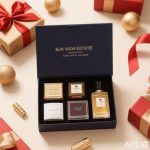In the world of premium teas, Tieguanyin stands as a legendary oolong variety cherished for its complex floral aroma and lingering sweet aftertaste. Yet what many tea enthusiasts overlook is the crucial role that packaging plays in preserving and enhancing this exquisite tea’s qualities. The Tieguanyin tea packaging box isn’t merely a container—it’s the first chapter in your tea journey, a guardian of flavor, and an expression of cultural heritage.
Traditional Tieguanyin packaging has evolved significantly over centuries, reflecting both cultural values and practical needs. Historically, these precious tea leaves were stored in ceramic jars or wooden boxes lined with parchment paper. Today’s packaging boxes combine this wisdom with modern technology, creating vessels that protect against moisture, light, and oxygen—the three arch-enemies of tea preservation. The sophisticated packaging ensures that when you open your box weeks or months after purchase, the tea retains its original character and freshness.
The design philosophy behind quality Tieguanyin packaging boxes balances aesthetic appeal with scientific precision. Most premium boxes feature multiple layers of protection, typically beginning with an outer cardboard shell that provides structural integrity. Inside, you’ll often find food-grade aluminum foil bags with one-way degassing valves that allow tea to breathe without letting air in. This multi-barrier system maintains the optimal humidity level while preventing aroma escape, ensuring that the tea’s delicate orchid notes and honey undertones remain intact until brewing.
Beyond functionality, Tieguanyin packaging serves as a canvas for cultural storytelling. Many boxes feature intricate designs inspired by Chinese philosophy and nature—bamboo motifs symbolizing resilience, lotus patterns representing purity, or calligraphic renditions of classical poetry. The color palette typically leans toward elegant earth tones and deep reds, colors traditionally associated with prosperity and harmony in Chinese culture. These artistic elements transform the simple act of opening a tea box into a meaningful ritual that connects drinkers to centuries of tea tradition.
Environmental consciousness has become increasingly important in Tieguanyin packaging design. Leading tea producers now prioritize sustainable materials like recycled paperboard, soy-based inks, and biodegradable inner liners. Some innovative companies have developed packaging that can be repurposed as decorative storage containers or planters, extending the product’s lifecycle beyond its initial purpose. This eco-friendly approach not only reduces waste but aligns with the philosophical principles of balance and respect for nature that are central to tea culture.
The unboxing experience itself forms an essential part of the tea ritual. A well-designed Tieguanyin package unfolds like a treasure chest, revealing the tightly rolled tea leaves in stages. The subtle rustle of opening the inner foil bag, the first encounter with the tea’s captivating aroma, the visual presentation of the dark green leaves—these sensory moments build anticipation and mindfulness. This deliberate pacing encourages tea drinkers to slow down and appreciate the ceremony of preparation, transforming a simple beverage break into a meditative practice.
For tea businesses, investing in quality packaging represents both practical wisdom and marketing intelligence. Studies show that consumers perceive better-protected tea as higher quality, justifying premium pricing. The packaging becomes a mobile advertisement when displayed in homes or offices, sparking conversations about tea culture. Furthermore, durable packaging reduces transportation damage and customer complaints, creating economic benefits throughout the supply chain.
As Tieguanyin tea continues to gain international popularity, its packaging has adapted to global markets while maintaining cultural authenticity. Bilingual labeling, brewing instructions tailored to Western habits, and designs that bridge Eastern and Western aesthetics have made this traditional tea more accessible worldwide. Yet at its core, the packaging remains faithful to its purpose: honoring and protecting one of China’s most celebrated tea treasures.
When selecting Tieguanyin tea, remember that the packaging tells a story about the producer’s commitment to quality. A carefully designed box indicates respect for the tea’s journey from mountain gardens to your teacup. So the next time you hold a beautifully packaged Tieguanyin box, appreciate it not just as a container, but as an integral part of the tea experience—a bridge between tradition and modernity, between the tea farmer’s craft and your moment of enjoyment.




Leave a Message